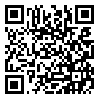Volume 20, Issue 1 (2013)
EIJH 2013, 20(1): 13-28 |
Back to browse issues page
Download citation:
BibTeX | RIS | EndNote | Medlars | ProCite | Reference Manager | RefWorks
Send citation to:



BibTeX | RIS | EndNote | Medlars | ProCite | Reference Manager | RefWorks
Send citation to:
Taheri A R. The "Man-Bull" and the «Master of Animals» in Mesopotamia and in Iran. EIJH 2013; 20 (1) :13-28
URL: http://eijh.modares.ac.ir/article-27-7470-en.html
URL: http://eijh.modares.ac.ir/article-27-7470-en.html
Abstract: (3396 Views)
The Mesopotamian mythology represents a variation of monsters and hybrids. Among them, the fantastic creatures in the composition of the animal and the man are very important; it is about the "man-animal". What attracts our interest; it is the composite creature, the "man-bull", because of its diverse aspect, as well as its symbolic characteristic.
On the other hand, we notice one of the very practical figures and very renowned, "Master of animals", it is appreciated as much as all the Mesopotamian regions represented it in their arts.
Problematic: what types of the "man-bull" had most importance in Mesopotamia? Which is the relationship enters the "man-bull" and "Master of animals"? What physical evolution arose during the transformation of the "man-bull" to "Master of animals"?
Hypothesis: there is doubtless a narrow relation enters the "man-bull" and "Master of animals ", as regards the symbolizing character to be able to it and their appearances in vertical position. Mesopotamia represents a particular character of the real or fantastic animals, which spread towards the other parts of the country; it is about the representation of animals in vertical shape.
Received: 2011/10/25 | Accepted: 2012/10/17 | Published: 2014/02/4
| Rights and permissions | |
 |
This work is licensed under a Creative Commons Attribution-NonCommercial 4.0 International License. |







